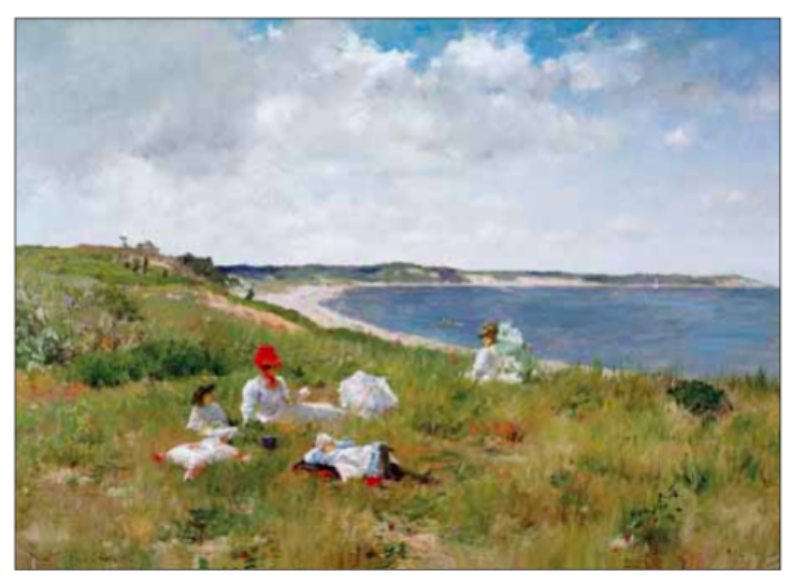
Keying on the naming of the CH Sabin estate flanking NGLA and his Bayberry Land cottage, the works of William Merritt Chase who lived in Southampton and painted turn of the 20th century views there might help folks understand that the land may not have been extremely chocked with bayberry (Myrica pensylvanica) bushes and other sand loving woody species. I would think if the girls could get around on foot, CB & JW on horseback had quite a run of the land!
Figures 7, 8, & 9 From :
http://www.antiquesandfineart.com/articles/article.cfm?request=952
Fig 7. William Merritt Chase (1849–1916),
Idle Hours, ca. 1894.
Oil on canvas, 25 x 35 inches.
Signed "Wm. M. Chase" at lower left.
Courtesy Amon Carter Museum, Fort Worth, Texas (1982.1).
The painting depicts Chase's wife and two of his daughters, Alice Dieudonnée and Koto Robertine, on the beach of Shinnecock Bay. The other woman holding a parasol is possibly Chase's sister-in-law, Virginia Gerson. Idle Hours has a long exhibition history. It was once owned by the art patron Samuel T. Shaw, who lent it to the Interstate and West Indian Exposition in Charleston, South Carolina (1901), where it was awarded a gold medal.

Fig. 8: William Merritt Chase (1849–1916), Gathering Autumn Flowers, ca. 1894.
Oil on canvas, 21 x 38 inches.
Signed “Wm. M. Chase” at lower right. Courtesy collection of Mr. and Mrs. Paul Mellon.
Seated lower right in the painting is Chase’s daughter, Dorothy Bremond, holding a bouquet of flowers, with her sister Alice Dieudonnée behind and farther to the left, kneeling to pick flowers, while their sister Koto Robertine stands in the far background.

Fig. 9 William Merritt Chase (1849–1916),
The Big Bayberry Bush, ca. 1895.
Oil on canvas, 25-1/2 x 33-1/8 inches.
Signed "Wm. M. Chase" at lower left. Courtesy the Parrish Art Museum, Southampton, Long Island, New York, Littlejohn Collection.
This scene of Chase's three eldest daughters playing among the bayberry bushes also depicts the Chase summer home, designed by Stanford White, in the background. When it was shown in the Kansas City Art Club Exhibition of 1901, it was singled out as "noteworthy for its admirable atmospheric effect, and for the deft description of summer sunshine."